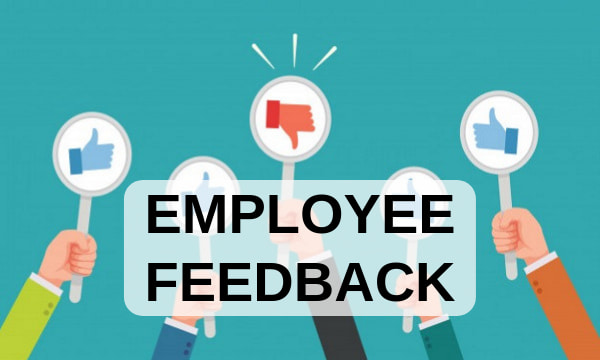During your career as a manager, you will undoubtedly have talks with your employees about their behavior on a regular basis. In fact, one of your most important tasks will involve observing your employees and making mental (and possibly written) notes about their performance, teamwork, level of interest, and commitment to the job. Then you’ll need to give them feedback about what you see, especially if it looks like a problem may be developing.
Feedback, which is sometimes called “instructive talking,” is communicating comments, opinions, or messages to another person about their behavior. In the best of all worlds, feedback provides an employee with a clear reflection of how his or her personal performance is affecting the company and the people around them, for better or for worse. This means that feedback can be positive or negative.
Although pointing out others’ mistakes and telling them how to improve may seem essential to improving performance, I’ve found that giving positive feedback can be even more important. When good behavior is noticed and appreciated, people become more confident, committed, and interested in their jobs. They’re also more likely to repeat the behavior. I make a point of giving employees positive feedback whenever I see that they’ve done a good job, helped someone else succeed, or functioned well as a team member. It always makes things even better!
Of course, when necessary, you can’t skip out on giving negative feedback. If an employee is slacking off, doing a poor job, or not cooperating with others, you have to let that person know what you’ve observed, how it impairs progress, and the effect it has on those around them. And you can’t stop there: You also need to help them find ways to make a change.
Giving negative feedback is like holding up a mirror to another person so they can see what they’re doing and figure out ways to improve. Here’s what it’s not: Scolding, threatening, haranguing, nagging, punishing, or preparing an employee to get the boot. When you give feedback (whether it’s negative or positive), you’re offering up a learning experience. Keep these two important rules in mind whenever you give feedback, whether positive or negative: Be specific and don’t delay.
Be specific. First, focus on the action or task, rather than on the employee him- or herself, then give explicit details. For example, instead of saying, “Tyler, you’re a great accountant!” say, “Tyler, I’m so impressed with the way you pulled all the numbers together and got this report out so quickly. Thank you!” Or, instead of saying, “Jayden, you don’t seem committed enough to do this project the way I need it done,” say, “Jayden, thanks for your hard work on this project, although I was hoping it would be done last week. Any ideas for helping to speed up the process?” In each case, the employee has a clear idea of what went right or wrong because the feedback was specific and precise.
Don’t delay. Here’s an interesting behavioral fact: The sooner you provide feedback to an employee (or to anyone, for that matter) after a behavior has occurred, the more likely it is that learning will take place. Feedback is most effective when you deliver it right away, when an incident is still fresh in everyone’s minds. Don’t wait until the yearly evaluation rolls around before you tell an employee that you noticed she was late to work five times the previous March. (She probably thought you didn’t care!) Similarly, when an employee puts together a priority project in record time, compliment him on his efficiency right away. Otherwise, he’ll think you didn’t appreciate his gargantuan effort.
This is the advice I give all managers and supervisors: keep your mouth open and in gear. Employees should hear from you with such regularity that they could recognize your voice from thirty feet away in a grocery store. What’s more, if you give continuous feedback, you and your employees are more likely to truly understand each other, resulting in fewer errors, better production, and less stress—for everyone!


Providing employees with regular feedback is essential to their professional growth, and most employees crave feedback. As such, consistent communication between employees and their managers is typically connected to higher engagement. When done right, it can motivate staff to perform better and can be a tool for building and maintaining communication with team members.
I couldn’t agree with you more. Thanks so much for providing your insightful and well-thought comment. I appreciate your feedback.
Hi, We are wondering if you would be interested in our service, where we can provide you with a dofollow link from Amazon (DA 96) back to denisemdudley.com?
The price is just $77 per link, via Paypal.
To explain what DA is and the benefit for your website, along with a sample of an existing link, please read here: https://pastelink.net/1nm60
If you’d be interested in learning more, reply to this email but please make sure you include the word INTERESTED in the subject line field, so we can get to your reply sooner.
Kind Regards,
Claudia
Claudia,
Thanks so much for reaching out and the offer of a dofollow link from Amazon. However, I have no interest at this time.
Best Regards,
Denise